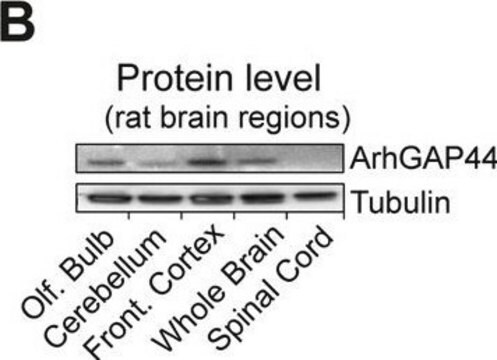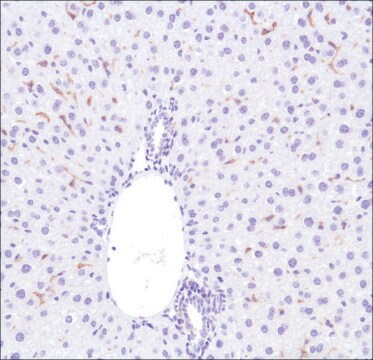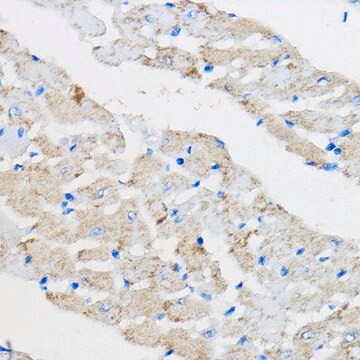MAB1435
Anti-Macrophages/Monocytes Antibody, clone ED-1
clone ED-1, Chemicon®, from mouse
Synonym(s):
Anti-Monocyte Antibody, Clone ED-1 Anti-Macrophages, Monocytes Detection Antibody
About This Item
Recommended Products
biological source
mouse
Quality Level
antibody form
purified immunoglobulin
antibody product type
primary antibodies
clone
ED-1, monoclonal
species reactivity
rat
should not react with
horse
manufacturer/tradename
Chemicon®
technique(s)
flow cytometry: suitable
immunohistochemistry: suitable
immunoprecipitation (IP): suitable
radioimmunoassay: suitable
western blot: suitable
isotype
IgG1
shipped in
wet ice
target post-translational modification
unmodified
Related Categories
General description
Macrophages are a type of white blood cell derived from monocytes that engulf invading antigenic molecules, viruses, and microorganisms and then display fragments of the antigen to activate helper T cells; ultimately stimulating the production of antibodies against the antigen.
Specificity
Clone ED1, which recognises a CD68 like molecule in rat is an excellent marker of activated microglia. For pan microglial markers, staining both resting and activated microglia, use like CD11b (MAB1387Z and others) or iba-1 (MABN92).
Immunogen
Application
Flow cytometry at 1:100 - 1:200. Use 10 μL of this working dilution to label 10E6 cells.
Radioimmunoassay
Also suitable for Immunoprecipitation, and Western Blotting.
Optimal working dilutions must be determined by end user.
Inflammation & Immunology
Immunoglobulins & Immunology
Target description
Linkage
Physical form
Storage and Stability
Handling Recommendations: Upon receipt and prior to removing the cap, centrifuge the vial and gently mix the solution. Aliquot into microcentrifuge tubes and store at -20°C. Avoid repeated freeze/thaw cycles, which may damage IgG and affect product performance.
Analysis Note
Macrophages, monocytes, lymphoid organs
Other Notes
Legal Information
Disclaimer
Not finding the right product?
Try our Product Selector Tool.
Storage Class Code
12 - Non Combustible Liquids
WGK
WGK 2
Flash Point(F)
Not applicable
Flash Point(C)
Not applicable
Certificates of Analysis (COA)
Search for Certificates of Analysis (COA) by entering the products Lot/Batch Number. Lot and Batch Numbers can be found on a product’s label following the words ‘Lot’ or ‘Batch’.
Already Own This Product?
Find documentation for the products that you have recently purchased in the Document Library.
Customers Also Viewed
Our team of scientists has experience in all areas of research including Life Science, Material Science, Chemical Synthesis, Chromatography, Analytical and many others.
Contact Technical Service









